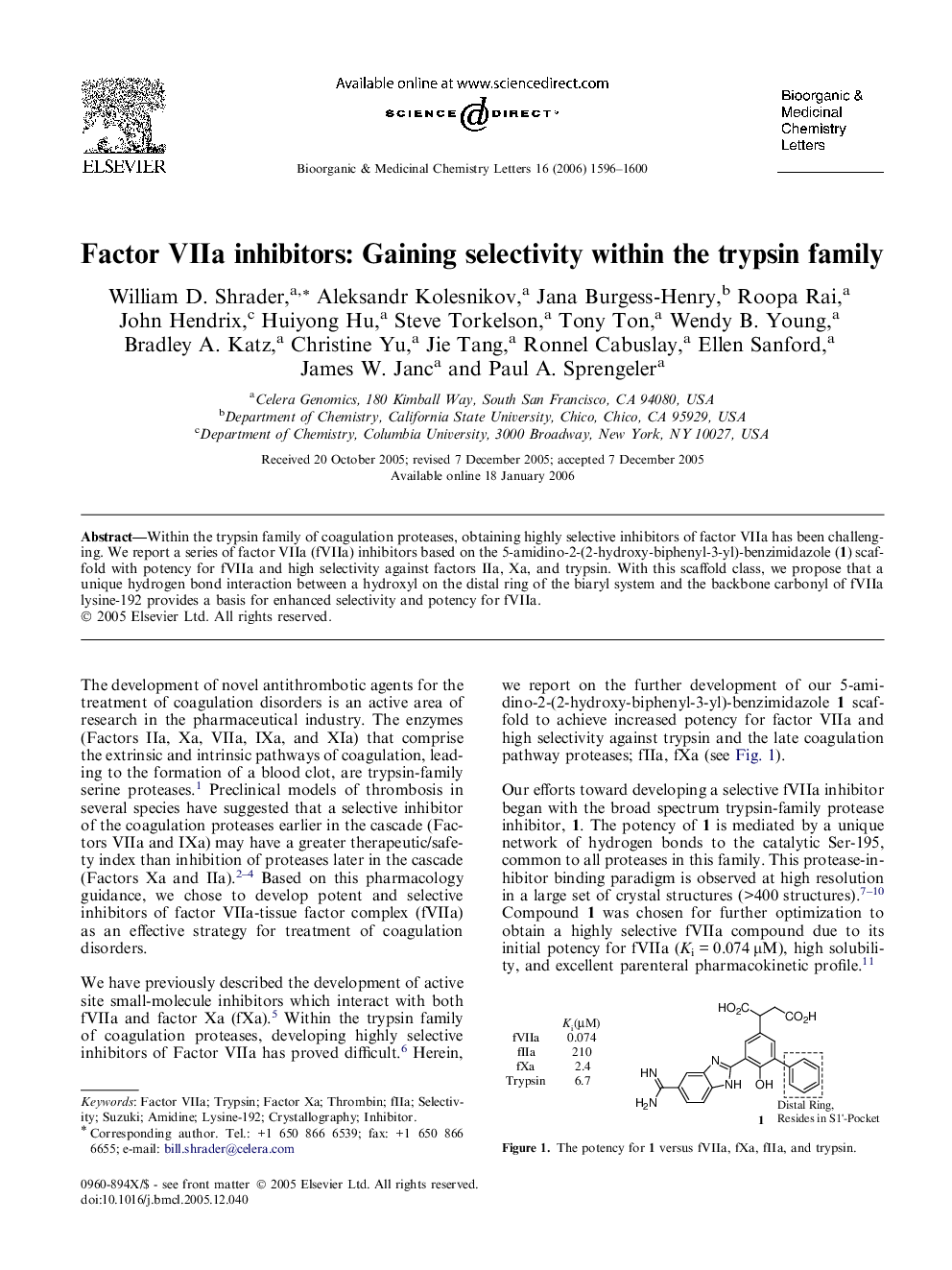| Article ID | Journal | Published Year | Pages | File Type |
|---|---|---|---|---|
| 1379074 | Bioorganic & Medicinal Chemistry Letters | 2006 | 5 Pages |
Within the trypsin family of coagulation proteases, obtaining highly selective inhibitors of factor VIIa has been challenging. We report a series of factor VIIa (fVIIa) inhibitors based on the 5-amidino-2-(2-hydroxy-biphenyl-3-yl)-benzimidazole (1) scaffold with potency for fVIIa and high selectivity against factors IIa, Xa, and trypsin. With this scaffold class, we propose that a unique hydrogen bond interaction between a hydroxyl on the distal ring of the biaryl system and the backbone carbonyl of fVIIa lysine-192 provides a basis for enhanced selectivity and potency for fVIIa.
Graphical abstractA series of highly selective and potent factor VIIa-tissue factor (fVIIa/TF) complex inhibitors were generated via a Suzuki-based synthesis strategy. With this scaffold class (9), we propose that a unique hydrogen bond interaction between a hydroxyl on the biaryl system and the backbone carbonyl of fVIIa Lys-192 provides a basis for enhanced selectivity and potency.Figure optionsDownload full-size imageDownload as PowerPoint slide
